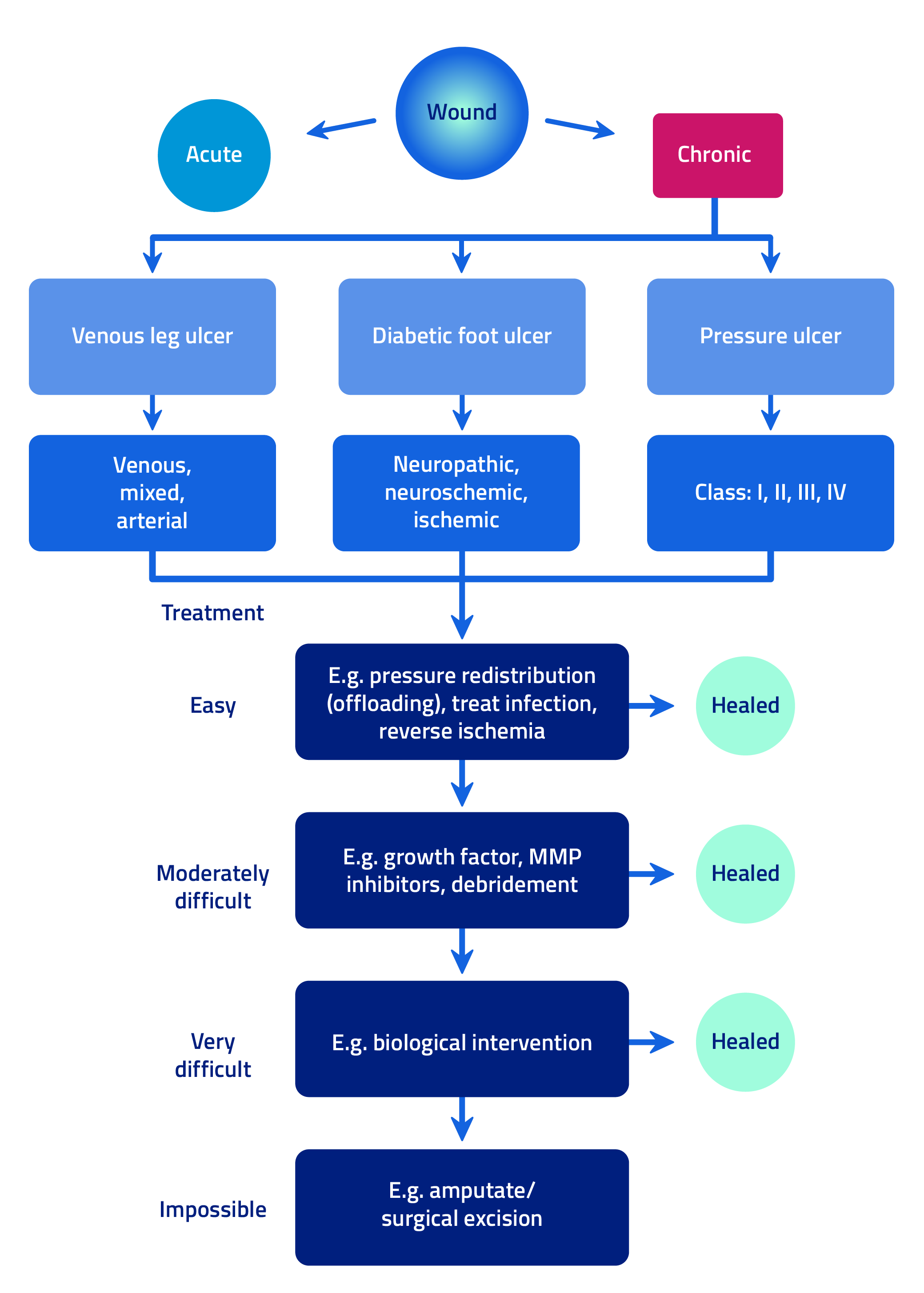Definition
A chronic wound is one that has failed to progress through the phases of healing in an orderly and timely fashion and has shown no significant progress toward healing in 30 days. Factors contributing to the chronicity of the wound may include:
- Pressure, trauma and/or lower extremity wounds
- Increased bacterial load
- Excessive proteases: Degraded growth factors, matrix metalloproteinases (MMPs), degraded cell surface structures
- Senescent/Aberrant cells
- Inappropriate treatment
Chronic wounds can comprise various causes, including but not limited to venous ulcers, diabetic ulcers, and pressure ulcers.
- Venous ulcers occur primarily in the legs of patients and are caused by problems with blood circulation due to dysfunctional blood valves or obstructed veins.
- Diabetic ulcers often start as small scratches or bruises which may be difficult for patients with diabetes to notice due to nerve damage and limited sensitivity. Compromised immune systems and damaged capillaries lead to these formerly small and benign wounds becoming dangerously infected.
- Pressure ulcers primarily afflict patients who are bedridden or of limited mobility. The constant pressure on the tissue over powers the pressure of the capillaries, affecting blood flow. Areas at the greatest risk for pressure ulcers are the sacrum, shoulder blades and heels. Correctly identifying the cause of a chronic wound as well as the local and systemic factors that may be contributing to poor wound healing is critical to successful wound treatment.
While chronic wounds can affect any age group, older people alongside patients suffering from diabetes or obesity are at higher risk of developing them. Although diverse, major causes of chronic wounds are excessive inflammation, persistent infections, formation of drug-resistant biofilms, vascular insufficiency, damaged peripheral nervous system, and the inability of skin cells to respond to regeneration. Due to the varying underlying pathologies, the healing of chronic wounds is challenging and an effective treatment requires a multi-layered, personalised and patient-centred therapeutic approach.

